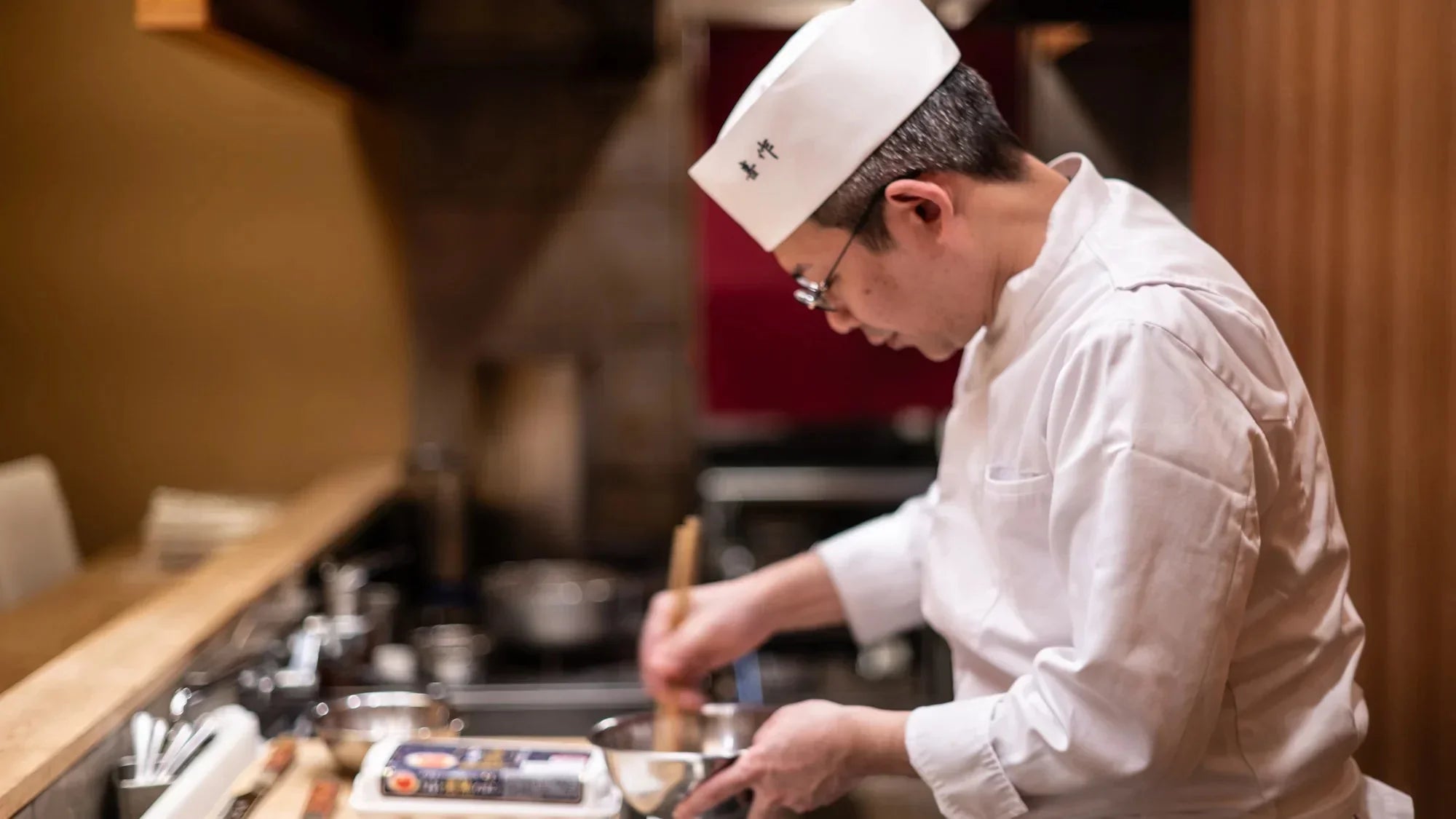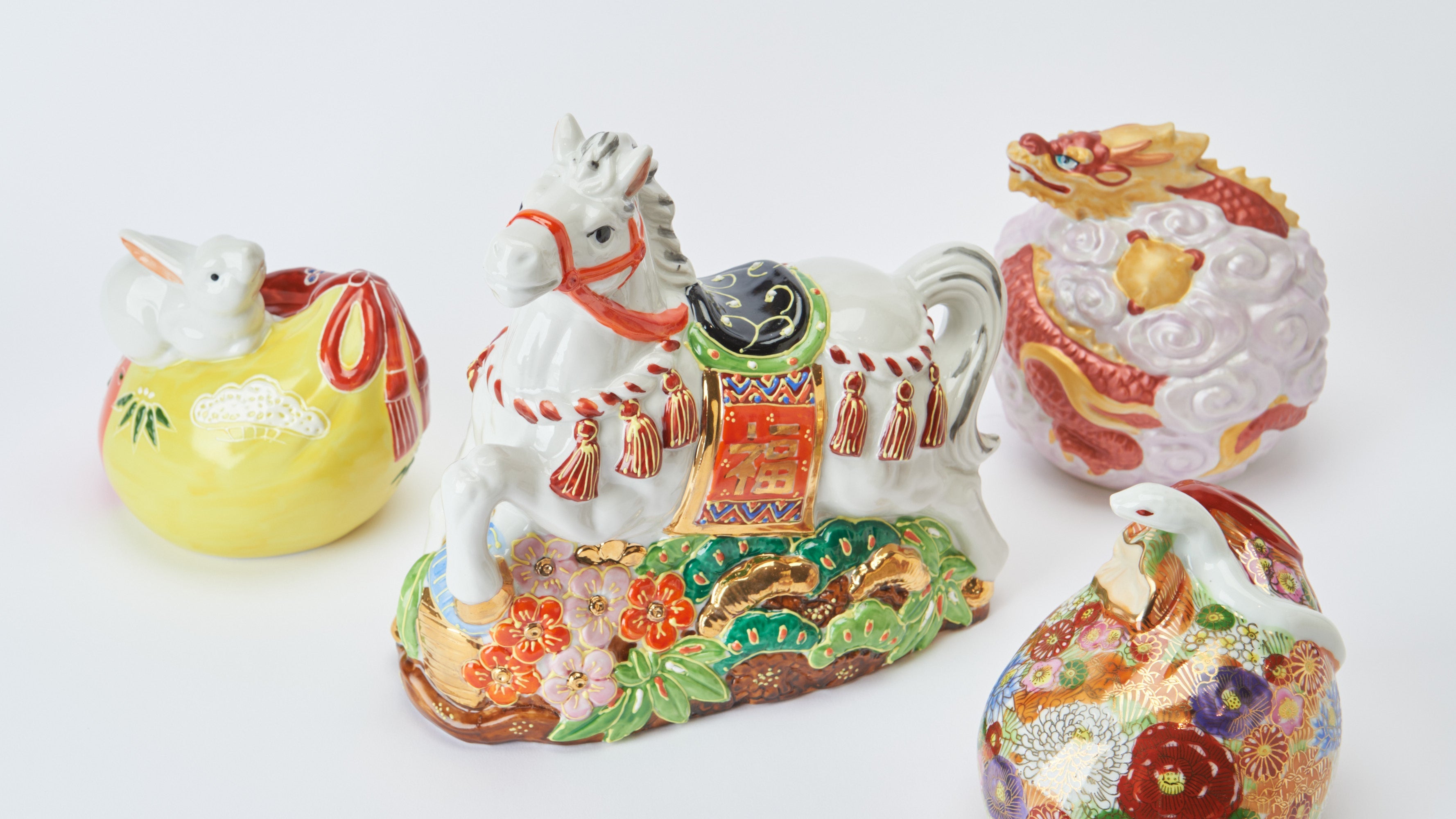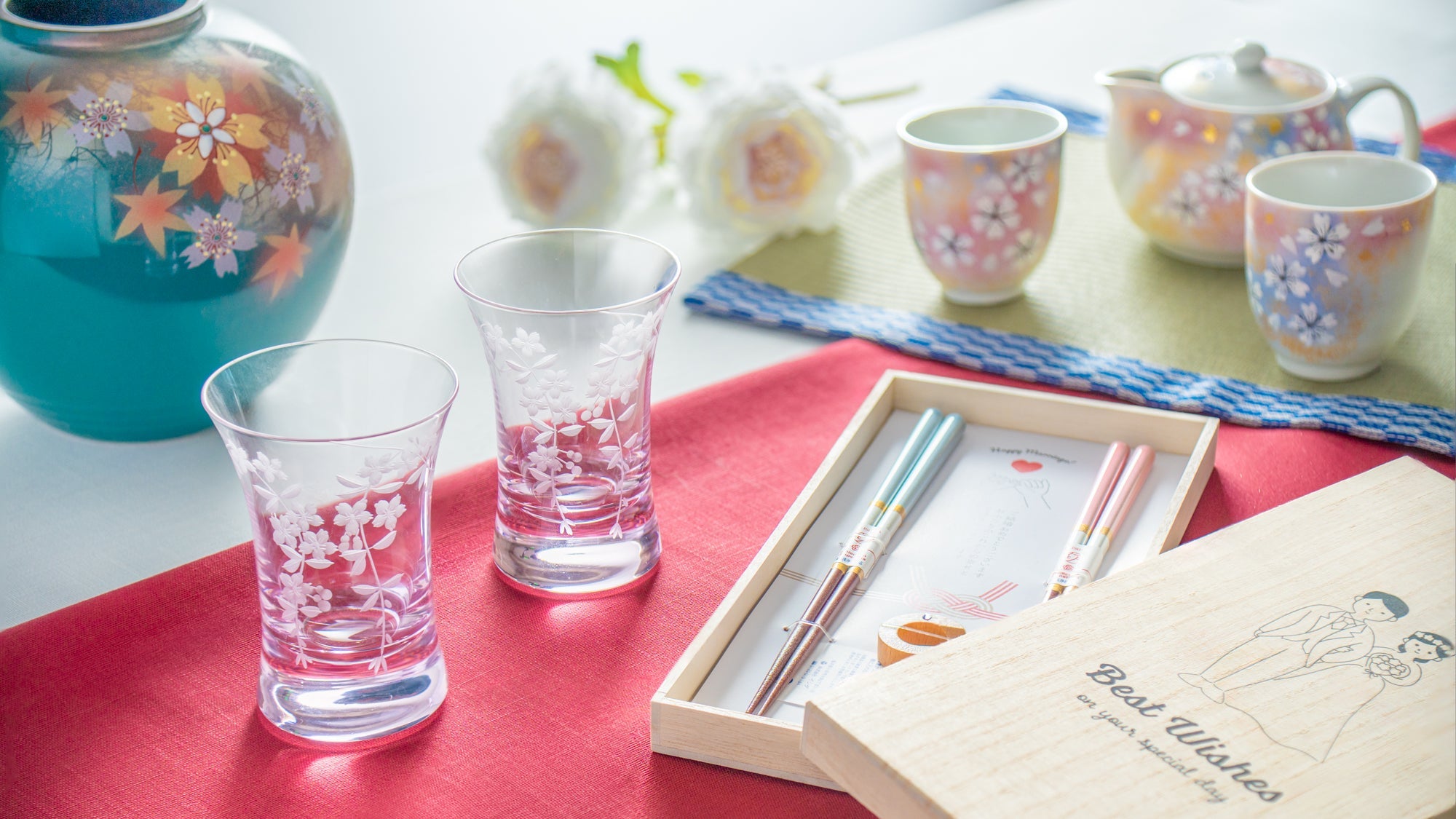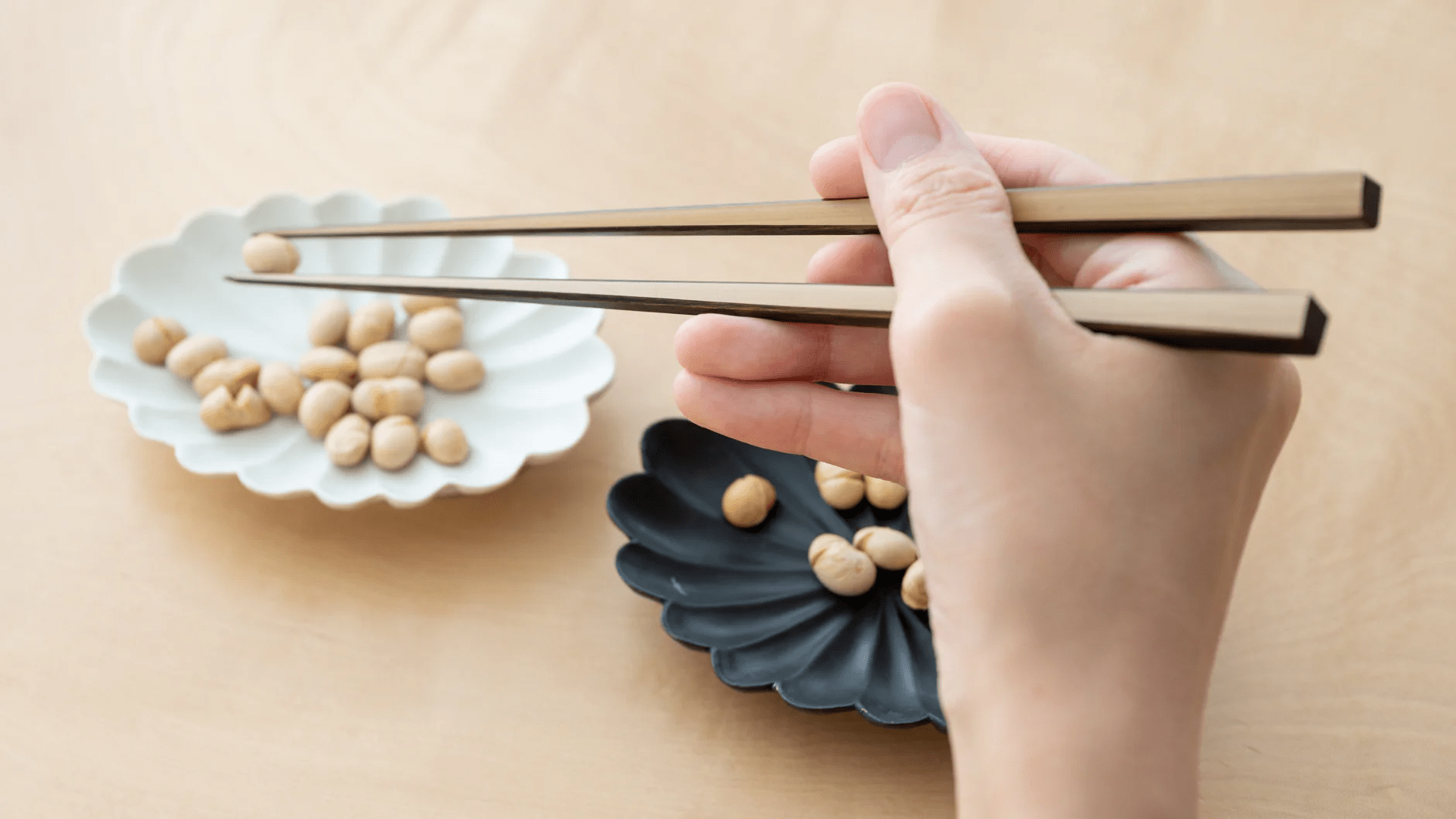
Savoring Umami: A Deep Dive Into Japanese Kappo Cuisine
Written by Tominaga Chiaki
Even for those who have navigated the rich tapestry of Japanese gastronomy, journeying from casual beef-bowl joints to high-end restaurants serving refined kaiseki and sushi, the term "Kappo" might still be an unfamiliar concept.
Kappo, deriving its meaning from 'to cut' and 'to cook,' alludes to a distinct dining style where chefs showcase their culinary expertise over a counter, delicately crafting and finishing dishes under the watchful eyes of their guests. It was once customary to individually order each seasonal dish, but in the modern culinary landscape, many Kappo restaurants have embraced the "Omakase" ethos. Much like kaiseki, the chef thoughtfully curates a seasonal course menu, elevating the dining experience to a new level of personalisation.
While kaiseki cuisine is centered on course dishes prepared behind the closed doors of a kitchen and then served in private rooms, the allure of Kappo lies in its juxtaposition of culinary transparency and relaxed sociability. It allows the diner to appreciate the chef's culinary prowess up close, engage in affable interactions, and savour their meal in an ambiance that is both intimate and convivial. It's not merely about food consumption but rather, an immersive journey that celebrates the culinary process itself.
On this occasion, the team from Musubi Kiln visited "Kisaku," a Kappo-style restaurant nestled in Azabu Juban, Tokyo. We had the privilege of speaking with the Chef, Yoshiaki Mori.

"Kisaku" is conveniently located just a short walk from Azabu-Juban Station, housed on the 5th floor of a building. Upon stepping out of the elevator, the restaurant welcomes us with its traditional Japanese interior - a surprising contrast from the building's exterior. Seasonal decorations such as a gentian flower in a celadon vase and the "Sudare" bamboo blind hung by the window gave a refreshing break from the sweltering summer heat outside.

As we remove our shoes and proceed inside, a bright wooden counter captures your attention.
"I think the distance between the customer and myself is closer than in a regular kappo restaurant. There's nothing to obstruct the view, and the height of the cooking area is the same as the counter," explains Chef Mori. Experiencing the delicacy and dynamics of the preparation up close is a unique pleasure that only a Kappo-style restaurant can offer.

Kappo Course Cuisine
1. Appetizer - Jellied "Uni" (sea urchin) with Edamame Puree, Shiso Flower
The first course is an impactful appetizer served in a cool glass - a delicate blend of jellied uni and edamame puree, punctuated by the bloom of a shiso flower. The orange of the uni juxtaposed against the green of the edamame captures the essence of summer, while the combination of lacquer dishware and spoon with the glassware lends an intriguing textural contrast.

2. Soup - "Hamo" (sea eel)
Hamo, known as "sea eel" or "pike conger," might be unfamiliar to some. Famous as a summer tradition in Kyoto, the fish resembles eel in shape and has a lot of small bones that require meticulous knife skills to cut through the numerous thin bones without cutting/damaging the skin. Its flesh crumbles delicately in the mouth and has a light, refined taste. The hamo is served in a larger soup bowl, which the chef explains is a stew bowl produced from Wajima lacquerware, perfect to accommodate the large hamo. The "Nami-Chidori" (wave and plover) motif on the bowl brings a touch of summer.



3. Sashimi - Isaki
At Kisaiku, they serve only one kind of sashimi. Instead of offering multiple types, the chef prefers serving a generous portion of the best fish available that day. That day's "Isaki" (grunt) was aged, which makes it softer and concentrates its umami. We enjoyed entirely different flavors when using salt and soy sauce.

4. Steamed Dish - Chawanmushi
A dish representing Kisaku with shiitake mushrooms, a staple ingredient in their kitchen, is Chawanmushi, a steamed egg custard, topped with "Konowata." Konowata is salted entrails of sea cucumber and is known as one of the three greatest delicacies since the Edo period. The umami flavor of the Shiitake and the saltiness of the konowata combine to create a very mellow and rich taste.

In fact, Chef Mori's grandfather, Kisaku Mori, was the first person in the world to successfully cultivate Shiitake mushrooms artificially. The restaurant was also named after his grandfather.
"The restaurant name Kisaku is taken from my grandfather's name, and it was my father's suggestion. He was very fond of me, so he suggested we should name it 'Kisaku.' My grandfather passed away when I was just three years old, but I wish he could have lived a bit longer."
At Kisaku, they always serve a dish using Shiitake mushrooms. Motifs of Shiitake can be found in the hanging scrolls in the Japanese-style room and on the tray placed at the entrance. These touches allow customers to feel the roots of Chef Mori throughout the restaurant.
5. Grilled Dish - Grilled Ayu
The ayu (sweetfish), slowly grilled to a crisp texture, is served skewered as if it is swimming. The serving dish presents a dynamic shape with a blue sometsuke (blue and white) design, reminiscent of a clear stream.

6. Mixed Dish - Shrimp, Okra, Mixed wth Black Sesame
The red of the shrimp, the green of the okra, mixed with the black sesame jumps vividly to the eyes. The bowl, although thin, is of a very unique shape. The natural texture and gentle painting are perfect for this vibrant, summery dish.

7. Deep-Fried Dish - Eggplant
Deep-fried eggplant, swiftly served alongside pine nuts and broccoli sprouts, is enjoyed with a delectable dashi broth. The crispy texture of the fried food, accented by the pine nuts, is fun. "The key is to load it with a lot of condiments," says Chef Mori.

8. Rice Dish - Hamo Katsu
Here, Chef Mori adds a playful touch. The hamo is dehydrated and concentrated in flavor, coated with fluffy breadcrumbs, and then fried to a crisp. Not a tonkatsu, but a hamo katsu. This is enjoyed like a mini set meal, with white rice, wakame seaweed miso soup, pickles, and several types of sauces. And the hamo katsu is all-you-can-eat, which is a surprise. "There was someone who ate eight pieces," says Chef Mori. Hamo Katsu is a summer-only menu, with pork fillet katsu in other seasons.

9. Dessert - Biwa Daifuku, Matcha Pudding
Chef Mori, who is not fond of sweets, finishes the meal with a "Daifuku" prepared right in front of you. He cuts a sheet of gyuhi (a type of mochi), carefully combines it with the subtly sweetened anko (sweet bean paste) and biwa (loquat), and wraps it all up neatly.
The slight bitterness of the matcha pudding, paired with the refined sweetness of kuromitsu (brown sugar syrup), provided a refreshing taste that was perfect for after the meal.

In this interview, what particularly resonated was the words Chef Mori spoke: "I must provide dreams for the customers." When asked about the specifics of what he meant, he replied, "I think of this job as selling dreams. If I can't provide a comfortable atmosphere in this space, they'll never come back."
"Our customers invest their valuable time and money to visit our restaurant. The fact that we have repeat customers who say, 'I want to eat this again' and come back, brings me great joy in my work," he said with a smile.
Hearing these words from him, I was reminded once again of the warm charm unique to Kappo restaurants, where the distance to the chef is close.
Chef Mori's humility and passion as a chef, and the artistry and distinctive personality of the dishes he offers, all contribute to the allure of the Kappo Kisaku. These elements provide a deep sense of satisfaction to all who visit. Such an experience would make anyone want to come back once they've had a taste. And that, above all, may be the allure of Japan's Kappo and what it means to taste the essence, umami of food culture.

Kisaku
COMSAZABUJUBAN 5th Floor, 3-3-9 Azabujuban, Minato-ku, Tokyo









Leave a comment
This site is protected by hCaptcha and the hCaptcha Privacy Policy and Terms of Service apply.